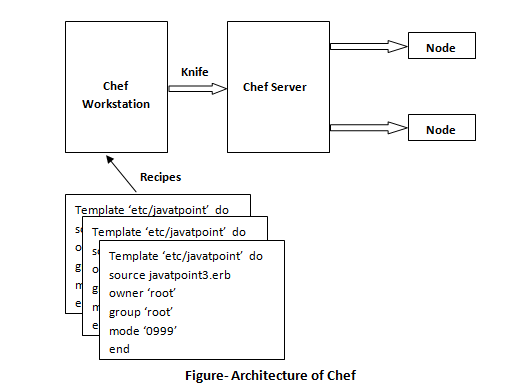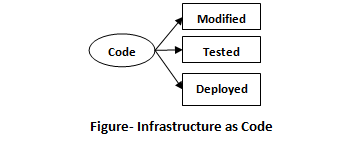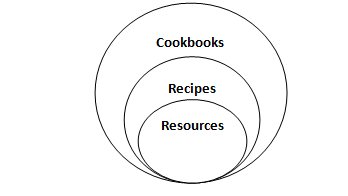- Robotic Process Automation with Python Tutorial | Learn to Write Python Script Command in RPA
- Kofax Tutorial: Getting Started | A Complete guide for beginners
- UFT Tutorial | Learn Unified Functional Testing – Best Guide
- Pega Tutorial : Learn the In-Built Features
- Automation Anywhere Tutorial | What is, RPA & Types of Bots
- SaltStack Tutorial
- Ansible Basic Cheat Sheet Tutorial
- RPA blue prism tutorial
- RPA Developer Tutorial
- UIPath Tutorial
- Appttus Tutorial
- Appium Tutorial
- Chef Tutorial
- Ansible Tutorial
- PowerShell Tutorial
- Blue Prism Tutorial
- Selenium Tutorial
- RPA Tutorial
- Robotic Process Automation with Python Tutorial | Learn to Write Python Script Command in RPA
- Kofax Tutorial: Getting Started | A Complete guide for beginners
- UFT Tutorial | Learn Unified Functional Testing – Best Guide
- Pega Tutorial : Learn the In-Built Features
- Automation Anywhere Tutorial | What is, RPA & Types of Bots
- SaltStack Tutorial
- Ansible Basic Cheat Sheet Tutorial
- RPA blue prism tutorial
- RPA Developer Tutorial
- UIPath Tutorial
- Appttus Tutorial
- Appium Tutorial
- Chef Tutorial
- Ansible Tutorial
- PowerShell Tutorial
- Blue Prism Tutorial
- Selenium Tutorial
- RPA Tutorial

Chef Tutorial
Last updated on 26th Sep 2020, Automation, Blog, Tutorials
What is Chef?
It is an open source configuration management tool developed by opscode. It is written in Ruby and Erlang. It automates the configuration and maintenance of more than one server. Chef uses Domain Specific Language (DSL) for writing system configuration. Chef follows client-server architecture.
Why should we use Chef?
Large companies have a continually changing infrastructure that requires be configuring and maintaining time to time. Chef provides:
- Continuous deployment: Software is deployed continuously enabling a company to keep in pace with the market requirements.
- Increases system robustness: Infrastructure automation ensures all bugs are caught and removed before deploying the software.
- Adapt to the cloud: The chef is easily integrated with infrastructure on the cloud.
Entire infrastructure can be recorded in the form of a repository that can be used as a blueprint to recreate the infrastructure from scratch.
Advantages and Dis-advantages of Chef
Advantages of Chef
- Fully automated deployment
- Within a minute you can configure thousands of nodes.
- Integrate with a cloud-based platform like AWS.
- Chef keeps the system under consistent check.
- You can record the entire infrastructure in the form of chef repository.
- The chef plays a vital role in DevOps software lifecycle
Dis-advantages of Chef
- Lacking documentation.
- Chef need code based knowledge for scripting the tool which makes it complicated.
- The master node can only be configurable in Linux\ Unix platform.
Features of Chef
- The chef is ideal for continuous deployment.
- Chef transforms the infrastructure into code.
- Chef supports multiple platforms like Arch, Debian, and Fedora.
- Chef is highly scalable, secure, and fault-tolerant.
- Chef has an active smart and excellent community support.
- The chef can operate in a distributed stand-alone or a centralized mode requiring a server.
Comparison among popular automated tools
| Metrics | Chef | Puppet | Ansible | SaltStack |
|---|---|---|---|---|
| Language | Ruby | Puppet DSL | Python | Python |
| Code | Open Source | Open Source | Open Source | Open Source |
| Infrastructure | Mutable | Mutable | Mutable | Mutable |
| Push/ Pull Mechanism | Pull | Pull | Push | Push |
| Architecture | Client/ Server | Client/ Server | Client | Client/ Server |
| Scalability | Highly Scalable | Highly Scalable | Highly Scalable | Highly Scalable |
| Management | Hard | Hard | Easy | Easy |
| Cloud Integration | Yes | Yes | Yes | Yes |
| Industry Example | Facebook, Youtube, Splunk, and Linkedin | Twitter, VMware, Redhat, and Paypal | Apple, juniper, SaveMart, and NASA | Lyft |
Chef Architecture
- Recipes are created at the workstation.
- Collection of recipe forms a
- The cookbook, uploaded to the server using the knife.
- Ohai is the component of the node that checks the system’s state and sends it to the chef-client.
- The chef-client ensures that the node’s state is consistent with the cookbook.
- If not, the client pulls the cookbook from the server.
- The node then configures itself with respect to the cookbook to the right state.
- There are three major components: workstation, node, and chef server.

Components of Chef
Workstation
The workstation is the system from which all configurations can manage, later pushed to the central chef server. This code is called recipe, and the collection of the recipe is called cookbook. These configurations are tested before pushing into the chef server. The workstation has a command line tool called Knife that is used to interact with the chef server. Multiple workstations can manage the central chef server. Following are the functions performed by workstation:
- Writing cookbook and recipes that will later be pushed to the central chef server.
- Managing nodes on the central chef server.
Subscribe For Free Demo
Error: Contact form not found.
Chef Nodes
Node is a physical or cloud-based system that is managed using a central chef server. A component that needs to be present on the node is an agent. The agent will establish communication with the central chef server. This agent is called Chef Client.
Chef Server
The server stores the cookbooks, the policies and configuration data. This is a centrally located server that holds all the data related to infrastructure. Chef runs in server-client mode. There are three types of chef server available-
Chef Solo- Solo removes the need of having a centralize chef server to test configurations on nodes. It is a kind of local deployment. Functionality wise, Chef Solo is very similar to Hosted Chef. However, in Chef Solo, you don’t have any limitation of nodes.
Open Source Chef- This is completely free an open source can be installed anywhere. Its functionality is similar to Hosted Chef. This also ensures that the open source Chef server remains as the local infrastructure and supports upgrades.
Hosted Chef- You are free from the repository of managing a central chef serves yourself. Hosted Chef is hosted by Opscode. It is software as a service (SaaS) offering. It provides full scalability, all-time availability of resources, and resource-based access control.
Workstation Components
Local chef repository
A repository is a place where every configuration component of central chef server is stored. Chef repository can be synchronized with the chef server.
Chef Client
Chef client act as a thick client means it does most of the heavy lifting. Chef client periodically contacts to central chef server downloading required configuration applicable to node compiling those configurations locally on the node. It establishes communication with the central chef server. Following are the functions performed by chef-client:
- Node interacts with the central chef server.
- Periodically checks for the new configuration, if any.
- It manages the registration of the node to the central chef server.
- Node pulls the cookbooks and applies them to the node to configure it.
- Each node can have a different configuration environment.
- Ohai fetches the current state of the node it is located in.
Infrastructure as Code
Infrastructure as code is a type of infrastructure where the operation team manages the code rather than a manual procedure. It makes policies and configuration management more straightforward and more efficient.
Suppose that you are a system administrator in a company and you need to set up a server and install 25 software applications over it. This process will take too much time to install manually. Let us consider you have a code for installing software rather than doing it manually.

- Modified the code to meet the software installations requirements.
- The code should be tested to catch any bugs.
- The code can be easily deployed, and all installations would take place automatically.
Building Blocks of Chef
Recipes
The recipe describes a series of resources that should be in a particular state that is packages that should be installed, services that should be running or files that should be written. The user writes recipes that describe how the chef manages applications and utilities and how they are configured. A recipe has the following characteristics:
- It is a collection of similar types of resources.
- It is written in the Ruby language with the help of some syntax.
- One recipe can depend on one or more recipes.
- It runs/executes in the same manner as is categorized in the run-list.
Cookbooks
These are the key segment contain qualities and data about the coveted condition of a node. Specifies the resources to use and the order in which they are to be applied. The cookbook is the most important and reusable component of a Chef Server. The cookbook is the basic unit used to define rules and regulations for configuration purposes. It contains the recipes that have all the specifications of resource management and also, it has the order of application of resources. It includes the procedure to reuse the collection of resources.

- Templates
- Attribute values
- Definition and custom resources
- File distributions
Template: It is similar to files, but it is not static. The extension of these files is .ebr, which means they conation embedded Ruby. The template is used to update and make the existing file.
Attribute Values: Attribute value used in the cookbook. There are different kinds of attributes that can be applied with a different level of precedence over the final setting that the node operates under.
Definition and Resources: there can be multiple resources in a recipe which will help in configuring the infrastructure
File Distribution: it contains any static file which will be placed on the chef nodes that uses the cookbooks. A recipe can be declared as a resource that moves the files from that directory to the final node. For example cookbook, file, service, package.
What are the Benefits from Chef?

- Expedite Software Distribution: High-performing IT associations are the ones that can deploy their software product on request and inside one hour of another submit. Computerizing your IT infrastructure– assembling new conditions, testing and surveying changes to the code base, sending new programming adaptations etc. are the ones that are easily achievable via Chef.
- Enhancing Service Flexibility: Obviously, speed is not the only main essential factor. It’s insufficient to audit and deploy changes rapidly if these progressions additionally include bugs or make crashes a more probable event. By discovering those bugs and issues before they happen and close monitoring of issues, foundation robotization builds your framework’s strength in the same way as it increases your speed.
- Remodeling Risk Management: Chef’s infrastructure framework mechanization abilities can bring down the rate of risks and enhance compliance at all phases of improvement. Your compliance as well as security arrangements can be encoded as a major aspect of a Chef formula and can be tried consequently before sending.
- Exploit Cloud for your betterment: Via automating your cloud foundation and dealing with routine manual activities in a more streamlined way, Chef frees up some valuable time for your DevOps group to be more agile and proficient. Your applications and workloads can be moved rapidly and easily, while your servers and foundation are consequently introduced, designed, and provisioned by Chef formulas that you compose way ahead of time.
- Integrate Data Centre and Cloud Environments: Under the Chef umbrella, you can deal with all your cloud and on-premises conditions without a moment’s delay, including servers running the Windows, Linux, IBM AIX, and Solaris working frameworks. The chef is additionally a “cloud agnostic” arrangement, enabling you to continue utilizing it even as you change cloud suppliers.
- Collate your Infrastructure: The chef can easily slice through this many-sided organizational structures and data models to streamline your IT tasks and work process. From building and testing completely through conveyance, checking, and investigating, Chef gives a pipeline to nonstop deployment that you can use to accomplish progressively and settle on better choices.
Chef Certification
Certification is like a testimonial that no recruiter can ever ignore. With a shift to the cloud-based technologies and enhanced automation drives. Need for Chef professionals has increased so much so that organizations are paying up to $130,000 annually to the Chef professionals they are recruiting.
DevOps Training & Certification Course
- Personalized Free Consultation
- Access to Our Learning Management System
- Access to Our Course Curriculum
- Be a Part of Our Free Demo Class
The Chef Certification program gives a chance to show and impart your computerization abilities wherever and at whatever point you pick. Chef utilizes a badge based appraisal approach just like DevOps that gives you a chance to modify your level of certification in a way that mirrors the aptitudes most applicable to your skill-set. Assessment badges reflect an authority of functional certifiable abilities you use to tackle issues with computerization. These individual identifications consolidate to meet pre-characterized levels of Chef Certification.
As we have already established that Chef certification comes in different badges and each badge display a different skill, here is a list of a few common badges that people opt for-

Chef Certification Exams
You will surely need expert help in this because Chef is still a nascent concept that many industry experts are not even aware of. You will need training and guidance.
Conclusion
The chef can be a really groundbreaking technology to improvise your infrastructure. Reports suggest that 40% of the cost that corporations deploy is used in their infrastructure issues. You can really save that huge amount of money by hiring a Chef Professional instead. Automation is the key to success. Do not lock the doors of speed, rejuvenation, and modernization of your infrastructure. Save time. Save cost!